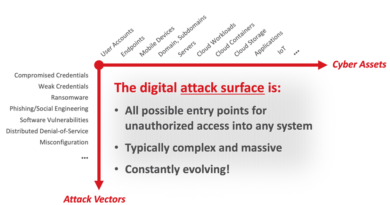Moore’s Law, Latent Demand, and the Slowing of Cloud Computing

Cloud computing helps cope with variable workloads. The inherent inefficiencies in using cloud are outweighed by the savings in not having to configure an on-premise data center with sufficient capacity to handle peaks in demand. Cloud is, of course, never as efficient as on-prem simply because of the cost, complexity, and overhead of running your work on someone else’s machine; tuned, configured, and instrumented by strangers to meet their business goals, and located at the other end of a network connection.
For organizations that have relatively stable workloads, local, on-premise computing makes more economic sense. In the early days of cloud computing, the simplicity of running variable workloads on the spare capacity in another, much larger, firm’s data center made sense tactically. Strategically, Moore’s law guaranteed that eventually the cost of computing would come down, undercutting the cloud vendors’ margins, turning the cloud market into a classic red ocean with vendors competing on price alone. But that collapse took much longer than expected, due to latent demand. Organizations reaped the financial benefits of cloud migration for a decade or more before running into price problems.
Latent demand refers to work that was not done because the data center didn’t have enough capacity. For those parts of the organization which had work to do but couldn’t build a business case to justify the on-premise capacity for it, cloud was a wonderful option. These pockets of demand followed the mantra of “OpEx not CapEx” that led some organizations to move towards cloud first—or cloud only—IT infrastructure strategies.
Cons of a cloud-first approach
The downside of a cloud-first strategy is the hollowing out of the IT skill pool. Once IT could migrate capabilities off-premises, the finance people sought further cost savings by downsizing. (Whew! That’s a lot of buzzwords! In English: we got rid of some of our equipment so we’re firing some of our support staff.)
Sticking with that theme, finance furthers its cost savings initiative by carrying the banner of OpEx not CapEx by replacing full time paid employees with third party organizations, believing that anyone can run this stuff—especially since it’s not really ours anymore. Someone in IT may wonder if they had only been a bit more agreeable when finance requested a huge investment in some questionable technology years ago… But it’s never good to merely second-guess the emotional subtext on corporate political struggles, unless one can actually do something about it.
This is similar to the age-old question: is it better to rent or to own? In the US, that simple question has hidden complexities. Over the past few years as traditional investment strategies have failed to generate the exceptional returns people remember from the 1980s and 1990s, investment banks and venture capitalists have begun buying homes and renting them out, increasing price pressure on families who dream of owning their own place. This price pressure has driven more families to renting – and the benefits of renting (freedom from maintenance, security, and ongoing support investments) are fading. As a former homeowner, I miss doing some planting and yard work now and then, although shoveling the driveway never really brought me that much joy. I built into my budget the annual investment of about 10% of the property’s value in infrastructure improvements and maintenance, like the roof, the furnace, the plumbing and electric.
The same goes with an IT infrastructure. As business needs change, the IT infrastructure has to flex with it, or the business becomes excessively costly, and its competitive posture worsens. The skill that led finance to move towards a cloud-first strategy must include expense projections across a strategically significant timeframe.
While switching cloud providers is not easy, switching from cloud to on-prem is much harder, and that investment must be justified just as crisply as the case for cloud. Cloud boosters fell hard for the fallacy that “It’s cheap today so it will stay cheap forever!” To quote Robert Heinlein, TANSTAFFL (which Rudyard Kipling first wrote in 1891, sources tell me, but The Moon is a Harsh Mistress is a much more readable and engaging text). Lazy thinking and slogan-based assessment will lead to catastrophic failure over the mid-term. Remember some consultancies saying that cloud was an infinite and inexhaustible resource?
How to run evaluate cloud vs on-prem costs
From this analysis we derive the following recommendations:
1. Model your current and likely pattern of IT consumption. Start with what you now use, and then build in what your overall corporate growth forecast might be. The idea here is to be generally right rather than precisely wrong. Put a reasonable band around projections and shifts on the type of computing you might use. On-prem vs cloud, for instance, would reflect how much more or less variable the demand might be for certain workloads. A set of work that is now fluctuating by 40% across a month or a year, but it is expected to double in overall size in three years, will most likely have dramatically smaller fluctuations over time. This means the cost and resource premium for cloud may no longer be justifiable. Having that set of models in place, add the following two additional dimensions to them.
2. Consider what latent demand your organization might have; work which you aren’t doing today but would do tomorrow if you could afford it. That additional bump will also smooth demand going forward
3. Overlay on that model the impact of Moore’s Law: driving down the cost of the underlying compute resource to satisfy that level of demand. Now you have a model which will show you when it would be good time to begin bringing work back into the data center to reduce out-of-control OpEx. Work the finance team to project proper asset depreciation schedules. In that analysis, include the curve for both introducing newer gear (at the expected lower cost) and for redeveloping your internal IT staff. You will be running a hybrid cloud environment for many years to come—but increasingly that cloud will be hosted within your four walls.
Without doing a comprehensive cost analysis across long timeframes, leaders poorly serve the organization. How long a timeframe? It should be proportionate to the expected longevity of the enterprise itself. Leadership owes it to its staff, its investors, and its continuing mission to clearly evaluate both sides of the cost equation before leading the enterprise into an impossible dead end.
What do you think? Provide your feedback at wjmalik@noc.social – and thanks!
Read More HERE




